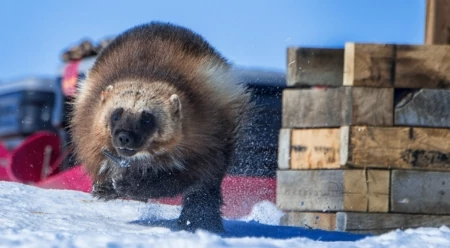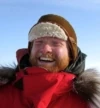In the Land of the Wolverine
Thumping along a frozen river by snowmachine, I’m winding my way into the heart of the Brooks Range in Northern Alaska. Riding snowmachines is a surprisingly busy activity, weight constantly shifting, eyes staring hard into the flat light, and today my decadent wrapping of goose down and full-face helmet with a heated visor—armor against the cold—are not helping.
But it’s 20 below and the wind is cutting sideways, so I do my best to forget my marshmallow wardrobe and keep on track. Scenery streams by and my mind begins to wander to what lies ahead.
Together with my research assistant, I am leading efforts as part of a Wildlife Conservation Society project to understand this incredible landscape. My focus transcends any professional obligation—a wonder and passion for the relatively poorly understood wolverine. Our destination today is a site where a collared animal has spent the last three days straight, moving less than 60 feet in 72 hours.
I’m worried that he’s slipped his collar, or possibly been killed in an avalanche. We arrive at the site and, removing my helmet, I’m flooded by the quiet, sweeping white expanse of the Brooks Range. The breeze never feels so good as after five hours in a full-face helmet. I could stay here for days.
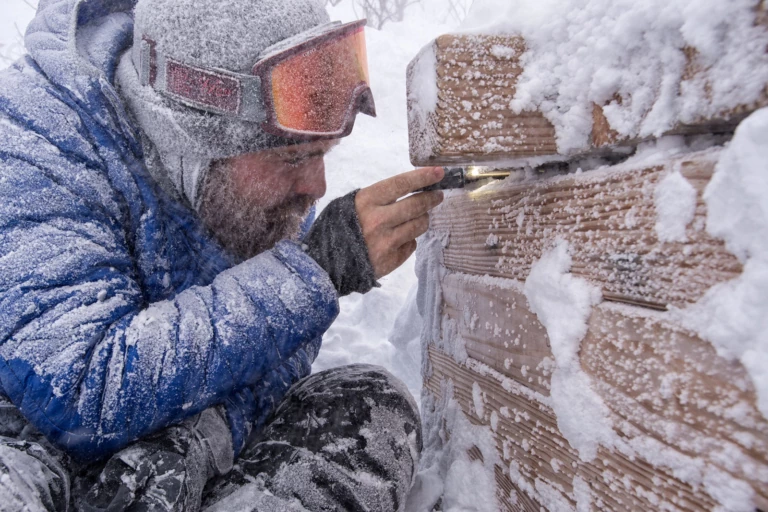
WCS Research Assistant Matt Kynoch peers into a live trap on the morning of a capture. We are notified by satellite transmitter when a trap is triggered, so our response time is generally less than six hours, depending on the conditions. Photo: Peter Mather
Our study area stretches from the Arctic Refuge to the National Petroleum Reserve Alaska. We are more often than not the only human sign in this vast expanse of wild lands, and sometimes you’d not even see us as we are engulfed in the whiteness of winter. These lands are this nation’s heritage, supporting outdoor enthusiasts and providing food and cultural security to local subsistence users. And it is these pristine areas that are now in the crosshairs of some in Congress and the Administration; they have placed oil and gas development ahead of both our heritage and the biodiversity that thrives here.
At various times in our travels we are joined by caribou, ptarmigan, red fox, arctic fox, sheep, moose, wolves, wolverine, and bear. Occasionally a snowy owl swoops from a nearby knob of tundra or rock, eyeing the tundra for shrews. When we don’t see the animals, we unravel their lives through the endless string of prints they leave behind them, their written history.
There are days and places where we are surrounded by wildlife, and the next day they are gone, the snow all prints and perhaps a splash of red, like the morning after the party.
We regard this as the land of the wolverine, or qavvik as the local Inupiaq communities call them. The wolverine is omnipresent here.
This animal through guile and tenacity makes a living, disregarding terrain as they lope their 100,000 plus steps each day. Our photographer colleague notes they are an animal that regards the whole world as flat, they don’t seem to care when the terrain tilts up or down, they just keep loping through it with barely a pause.
We track them in their slow pursuit of caribou, sometimes as far as 50 miles. Following their tracks and remnants in the snow, we find the places where a 15 kilogram wolverine wears down a 100-plus kilo caribou until the end comes without even a struggle for the exhausted victim. Other times wolverines return to old food caches or check new carcasses that wolves or infirmity leave on the landscape.
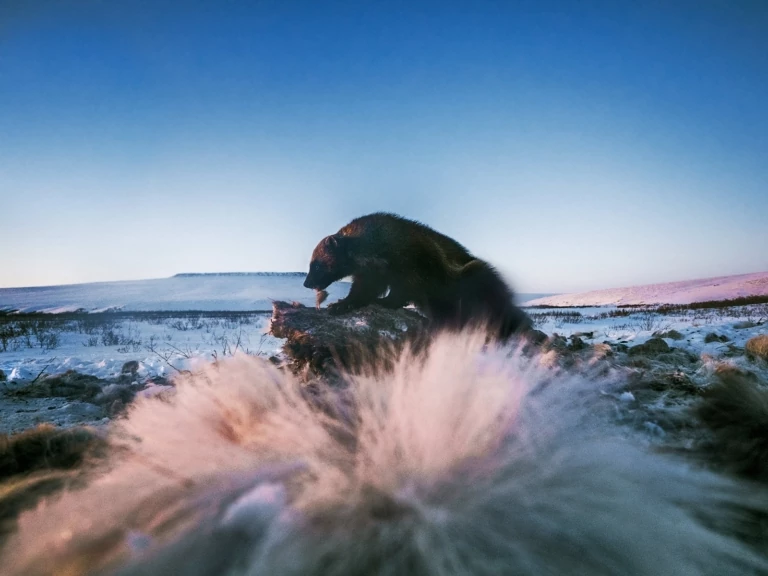
A wolverine chews on a caribou carcass, eyeing the horizon for competition. Photo: Peter Mather
Today, in the heart of the Brooks Range, our mystery has been solved. This collared wolverine (“Walnut,” to his friends) spent those 72 hours at the carcass of a bull caribou, likely one that died earlier in the winter of other causes. I am relieved that he’s fine and that his collar is still on. He will no doubt lead us to a myriad of other curious sites—perhaps a denned female with her kits—and ultimately help us better understand the habitat requirements of this species in such a harsh environment.
We’ll eventually release Walnut’s collar remotely. If that fails, the little piece of fabric we sewed into his collar for this eventuality will degrade in the sun and damp, rotting away and leaving the collar to fall off in two to three months—the last signals providing us with where to retrieve it.
I think that many of us are drawn to wolverines because they remind us of ourselves: at home in wild, rugged landscapes; requiring ample terrain (the wolverines we track patrol territories of more than 1,000 km2); climbing peaks just for the heck of it. The list goes on. We love this animal because we love the wild places that define it.
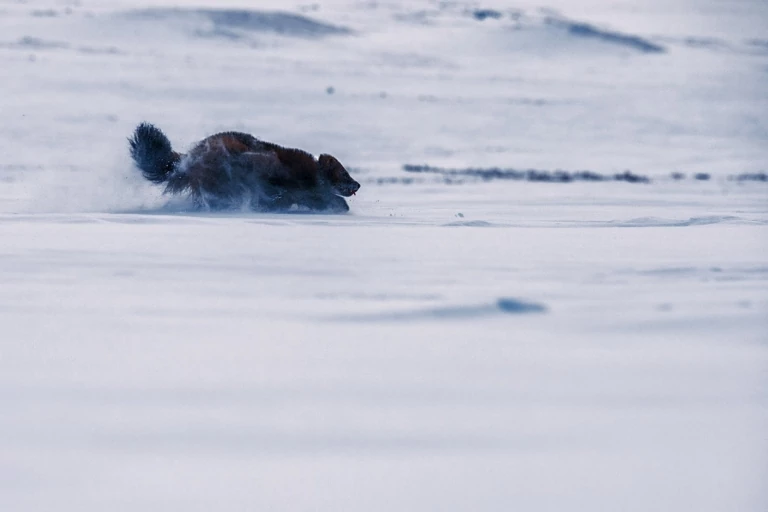
Snow flies as a collared wolverine puts her snowshoe-like feet to work in freshly fallen powder. Photo: Peter Mather
The healthy populations we monitor in northern Alaska are a testament to the vitality of the lands we travel through each day. These lands, be they a part of an Arctic Refuge or a Special Area within a National Petroleum Reserve, are a befitting heritage for our country. They deserve the protections they have enjoyed the past several decades, and it is not just the wildlife that will lose if we rush to develop them. We too will suffer if we despoil one of the only remaining truly wild places in our nation.
Breathing this air, feeling the space, and spending time with the wolverine and other species helps us throw off of our urban trappings and appreciate the immense value in this last and precious frontier space.
